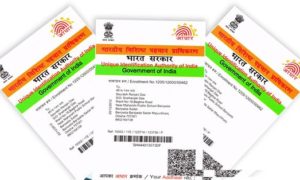Fixed deposits, where savings are parked for the long-term to accumulate interest and deliver guaranteed returns, are preferred for investment by 95 per cent Indian households. The safety FDs bring along with hefty returns, make them a hedge against volatile economic conditions, but recent policy changes have made another scheme more attractive.
Read More:-Bank credit growth pips deposit by ₹2L crore
With interest rates hiked by 70 basis points to 7.7 per cent, National Savings Certificates are poised to provide higher returns as compared to fixed deposits.
Read More:-SBI Card Revises Cashback Benefits From May 1 – Check New Offers Here
Differences between savings certificates and FDs
- A post-office investment vehicle offered by the government, NSCs lock in funds for five years and the minimum amount has to be Rs 1,000.
- Two adults can invest in NSCs together or they can buy the certificates in the name of a minor.
Read More:-RuPay Credit Card UPI Linking:Step-by-step guide to link it
- Previously available for cash, demand draft and cheques, NSCs are also accessible online through the postal department’s internet banking platform.
- Although the lock-in period for FDs and NSCs is the same, the savings certificates don’t come with any upper limit on investment while fixed deposits are capped at Rs 1.5 lakh.
Read More:-Unauthorised investment advisory services: Sebi bans 4 entities from securities markets for 6 months
- How attractive are the returns and tax benefits?
- Since FDs are compounded every quarter, the annualised return is marginally higher than the interest rate offered, but NSCs now offer higher interest even though it remains the same after yearly compounding.
Read More:-Stocks to buy: These five shares under Rs 500 could give bumper returns of up to 35%
- Both NSCs and FDs offer tax deductions upto Rs 1.5 lakh, but while the yearly interest on both is taxable, interest on savings certificates is reinvested and benefits can be claimed on them.
- The interest can be reinvested for four out of five years by showing it as income from other sources, and interest earned in the fifth year will be taxed.
Read More:-Are fixed maturity plans good for your retirement planning?
- NSCs offer better returns since tax deduction at source isn’t applied to them, while a yearly interest of more than Rs 40,000 earned on FDs attracts 10% TDS.
- This deduction at source lowers returns from fixed deposits as compared to NSCs, which can also be used as collateral for loans as opposed to FDs.





































